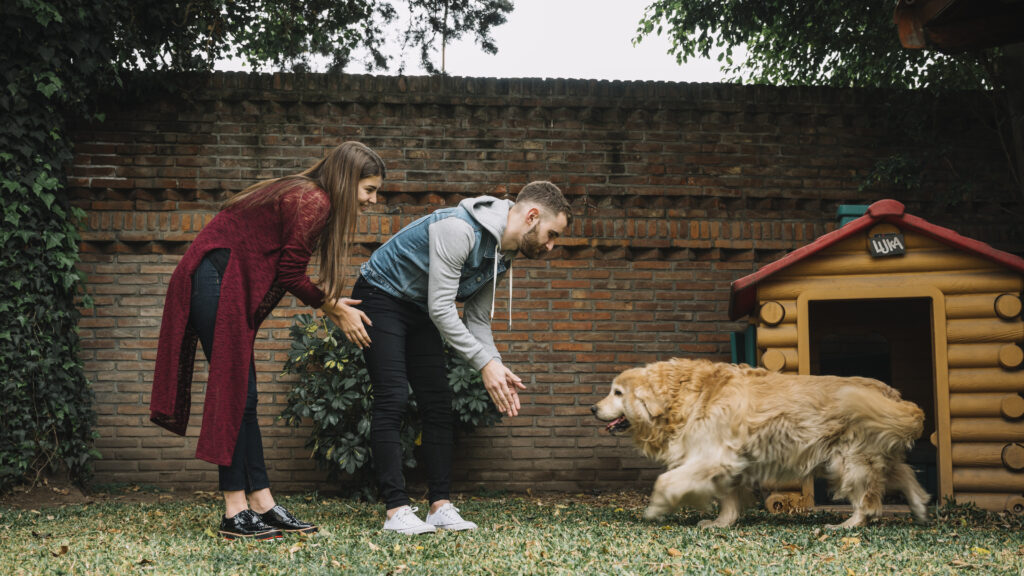
10 Common Dog Behavior Problems and How to Fix Them
Imagine coming home to find your trash can overthrown, your favorite shoes torn, and a furry friend with those big, innocent eyes. If you’re one of the 65 million American households with dogs, you might face behavior issues often. But what if these actions are not just naughty but ways for your dog to communicate?
Indeed, the path to fixing dog behavior isn’t just about strict training. It’s about understanding what your dog is trying to say. For example, a dog that barks a lot might be anxious or bored. Or, chewing things could mean they need more fun or are stressed when left alone.
With 47% of dogs finding new homes due to behavior issues, it’s key to find solutions that help their mind and body. Knowing how to address these issues can strengthen your bond and make your home happier and healthier for everyone.
Understanding the Root Causes of Dog Behavior Issues
Exploring common canine behavior issues shows many factors affect our pets. Aggression is a big problem, making up 70% of cases in North America. It comes from fear, anxiety, conflict, genes, and learning.

To fix these issues, we need to look at the deep reasons. Sometimes, health problems can make dogs act aggressive. Pain or discomfort can cause a calm dog to become aggressive. Health issues like thyroid or neurological problems can also lead to irritability or aggression.
So, seeing a vet is key to fixing dog behavior issues. It helps rule out or treat health problems.
Environments and past experiences also play a big part. Poor training or bad past events can cause confusion and anxiety in dogs. This leads to bad behavior. Good, consistent training is important to stop and fix these issues.
Another important thing is the relationship between dogs and their owners. Misunderstandings can make things worse. To solve problems, owners might need to change how they train and talk to their dogs.
Dog behavior is complex, influenced by many things. Each behavior might hide deeper issues. So, solving problems requires a full approach. This includes medical help, good training, and a caring environment that meets the dog’s needs.
Common Dog Behavior Problems: Barking and How to Mitigate It
Excessive barking is a common issue for dog owners. It can come from boredom, wanting attention, or feeling protective. To fix this, it’s key to know why your dog is barking. The ASPCA says understanding the type of bark is the first step to solving the problem.
Training is crucial in stopping barking. Teaching your dog the ‘quiet’ command and rewarding them when they stop can work well. Pet Palace offers training programs that use clicker training to help with this.
Often, dogs bark because they have too much energy or are bored. Giving them toys that challenge their minds and making sure they get enough exercise helps. This can reduce barking and keep your dog healthy. For more tips on keeping your dog healthy, check out this guide.

Separation anxiety can also make dogs bark a lot. Signs include a lot of noise when left alone. Getting help from a pro or special training can really help with this.
Dealing with your dog’s barking in a smart way can make life better for you and your dog. Using training, fun activities, and maybe professional advice is key. This helps your dog be happy and well-behaved.
The Challenge of Destructive Chewing in Dogs
Destructive chewing is a common problem in dogs. It can be caused by teething, boredom, too much energy, or anxiety. This behavior is natural but can be frustrating for owners. They often look for ways to solve this issue.
To stop your dog from chewing on things they shouldn’t, make sure they can’t get to your stuff. Puppies chew to explore and ease teething pain. Give them safe chew toys instead. Keep your things away and use chew toys to help them.
Adult dogs chew for different reasons like separation anxiety or lack of exercise. They need mental and physical activity to stay happy. Providing them with fun activities and enough exercise helps a lot.
Fixing destructive chewing is more than just giving them something else to chew on. Training is key. Use positive reinforcement to teach them what’s okay to chew. Reward them with treats and praise when they chew on the right things.
Changing the environment and training regularly helps a lot. Make a safe and interesting place for your dog. Use positive reinforcement to encourage good behavior. This way, you can overcome destructive chewing and have a happy dog.
How to Correct Dog Behavior: Dealing with Digging
Understanding how to correct dog behavior can be tough, especially with behavior problems in dogs like digging. Digging is natural for many dogs due to boredom, anxiety, or the need to hunt. It’s key to know why they dig to manage it well.
It’s important to give dogs the right places to dig. A sandbox in your yard can be a good spot for them to dig without harming your garden. Add toys or treats there to make it more appealing.
More exercise can also help reduce digging. Longer walks, runs, or fetch can use up their energy in a good way. Puzzle toys or training sessions can keep their minds busy, preventing boredom and digging.

Fixing behavior problems in dogs like digging means changing the environment and training. Teach your dog it’s okay to dig in one spot by training and rewarding them. Praise them for digging in the right place and gently stop them from digging elsewhere.
To fix how to correct dog behavior on digging, be patient and consistent. Every dog is different, so what works for one might not work for another. For personalized help, consider Positive Pets Dog Training. They offer customized advice based on your dog’s unique needs.
Separation Anxiety in Dogs: Signs and Solutions
Separation anxiety in dogs is a tough issue, showing up as howling, barking, and even destroying things. It can start right after an owner leaves and is more common in dogs from shelters. Knowing the signs is crucial for helping your dog feel better.
Dogs that shake or drool when they see their owner leaving need help. Experts suggest desensitizing them to the fear by leaving for short times and gradually increasing it. Giving them puzzle toys filled with treats can also help, but it might not work for all dogs. Before leaving, taking them on long walks and giving them toys can also ease their anxiety.
For dogs with serious separation anxiety, seeing a vet for medication might be needed. Creating a safe space and using positive reinforcement training can also help. Remember, fixing this issue can take months and may get worse during big changes. If your home isn’t right for your dog, rehoming might be the best choice. As an owner, being patient and kind is key to helping your dog with separation anxiety.





